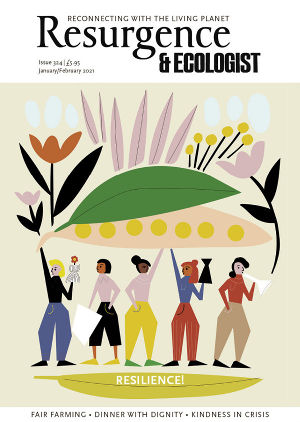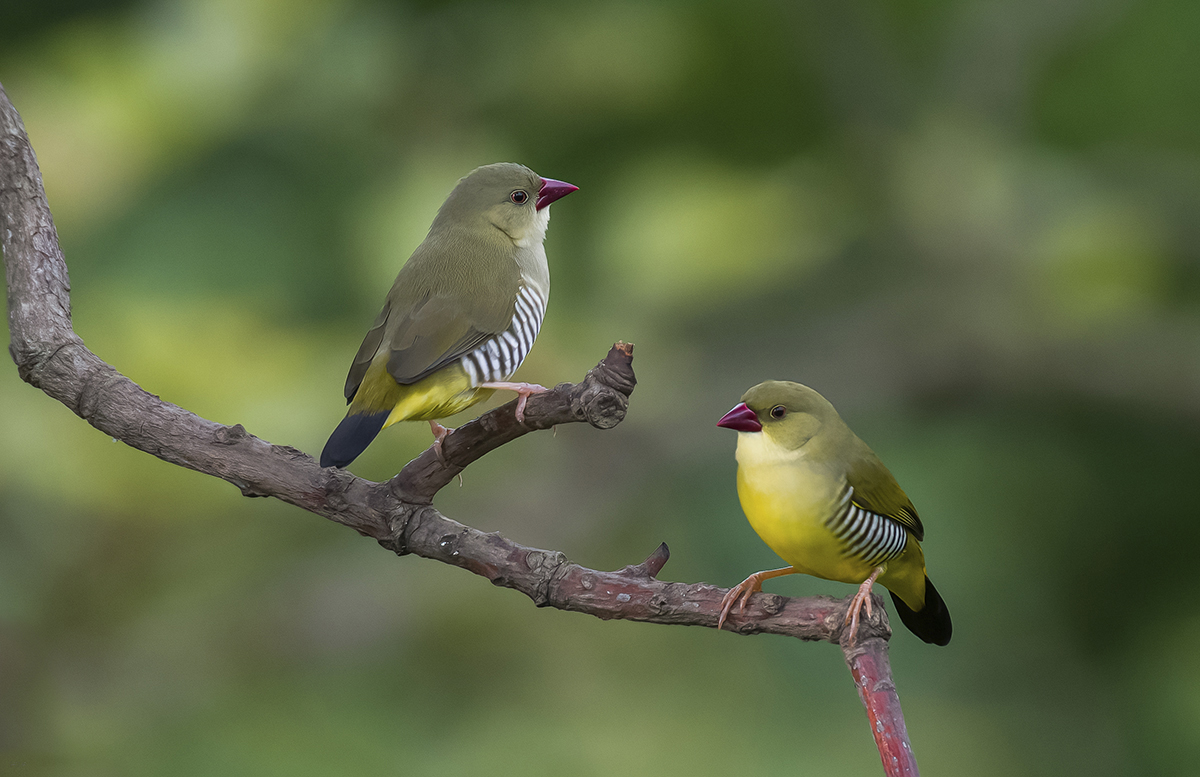It’s the end of July, the sun scorches everything in its path, and the forest gasps for water. Even the usually energetic Hanuman langurs take cover. Underneath the shade of a giant mango tree, a flock of exquisitely coloured birds chirp their high-pitched song. It’s a sign that the monsoon is on its way. Almost overnight the dry forests of Mount Abu Wildlife Sanctuary will burst into life in every possible shade of green.
Eight kilometres from Mount Abu, a hill station in north-west India, a pockmarked road perilously winds its way across hillsides covered with kachnar and mandar trees to the villages of Oriya and Achalgarh. Not far from these villages stands Guru Shikhar, the highest peak in the Aravalli range, which rises some 1,722 metres and is home to an ancient temple and cave. This area, renowned for its pilgrimage and tourist sites, is also home to five of the eight species of munia found in India, including the endemic and prized green munia, a member of the finch family Estrildidae that holds a special place for local ornithologists.
Recently I returned to Abu, where I had spent a portion of my childhood. It was painful to witness the lack of concern among locals over increasing environmental degradation of the forest, so in 2017 I teamed up with my father, a seasoned gardener who has planted trees in Abu for the last 40 years, to set up a protected biodiversity area within the wildlife sanctuary and eco-sensitive zone. Together we have been restoring the natural habitat in this area by planting native trees and managing the spread of invasive species. Our goal is to build a better home for our beloved green munias.
Known by their local name harias (meaning ‘the green ones’ in a local dialect of Hindi), the green munias, or green avadavats as they are also known, have an olive-green upper plumage, a lime-green upper back, a yellow belly, a red bill, a black tail, and distinctive bold and brightly coloured zebra-striped flanks. They have a loud, high-pitched call that ends in a prolonged trill and a twittering ‘swee, swee’. Their bright plumage and melodious song, coupled with their friendliness and ease of care, make them much sought-after cage birds and victims of the pet trade. They group together in large flocks, so they are easy to catch, although declining numbers have meant that trappers are finding fewer of them.
The word ‘avadavat’ is thought to be a corruption of ‘Ahmedabad’, a city in Gujarat state, reflecting the popularity of the birds as caged pets. The old city of Ahmedabad became the site of a thriving bird bazaar and a hub for the caged-bird trade in the 19th century. The trade continues to flourish and large numbers of these birds are still trapped – either by the use of a decoy bird or nets – and are traded in both the domestic and the export markets. There have been reports of the more common variety, the red munia, being painted green to command a higher price. Green munias have been spotted in the wild as far away as Lahore, in Pakistan, presumably having escaped from cages.
While the risk from trappers remains ever present, the major threat is habitat despoliation. Oriya and Achalgarh have become hotspots for unmanaged tourism. Loud music echoes around the hillsides, while relatively untouched habitats are being altered by traffic, deforestation and encroachment. Pesticide and chemical fertiliser use on local farms poses another significant threat to these seed-nibbling birds.
So far we have planted over 100 species of tree in the protected area. Access has been restricted and the land is no longer suffering from overgrazing, and the results are already visible in the appearance of grasslands with native wild flowers, a rarity in Mount Abu. While invasive lantana and Mauritius thorn present challenges as problematic species that must be tackled systematically, any removal of thick bush cover has to be carefully managed at the protected site to safeguard the natural nesting habitat of munias. Our conservation efforts also include rainwater harvesting, rubbish collection and, most importantly, vigilance to curb environmental violations around the villages. Flock sizes are starting to grow. On a lucky day, it is possible to see 50 or more birds.
Unfortunately, the textbook approach of involving the wider local community has been largely unsuccessful. Knowledge of the traditional way of living with the forest has been lost over the generations, and the terms ‘forest land’, ‘wildlife sanctuary’ and ‘eco-sensitive zone’ are not taken seriously. The neighbouring farms oppose our conservation efforts because they include land the farmers have been using illegally. They have retaliated against our conservation efforts by cutting the precious water supply to the new plantation. Poor law enforcement and lack of deterrence exacerbate people’s lack of care for the environment. We are hoping to change this attitude and raise environmental awareness. Fortunately there has been encouragement from the former forest minister of the state, Gajendra Singh Khimsar, and a handful of well-wishers.
Further research will be conducted at the protected site to better assist with management and conservation. We are pressing for a much-needed shift towards eco-tourism in order to safeguard and ensure the existence of this globally endangered species.
The sight of green munias feeding alongside white-throated munias (silverbills) and scaly-breasted munias has become a common sight all through the summer and monsoon months. To see a flock of these beautiful creatures congregating in the grasslands or rising to the forest canopy in their undulating flight – there can be no greater reward for our efforts.
For more information about the conservation work at Mount Abu, visit www.sahilzutshi.com







